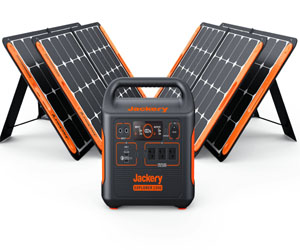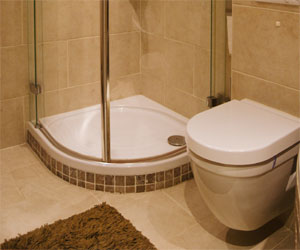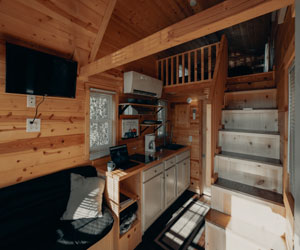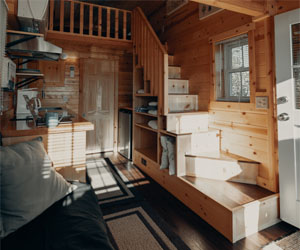


Illuminating The Future Of Energy

Solar technology has been at the forefront of the renewable energy revolution, providing clean and sustainable power solutions to meet the world's growing energy demands. In this article, we will explore the innovative aspects of solar technology, how it works, and its transformative potential in shaping a more sustainable future.
How Solar Technology Works
At the heart of solar technology is the photovoltaic (PV) cell, which converts sunlight into electricity. This process is accomplished through a series of interconnected steps:
Photon Absorption: When sunlight hits the PV cell, it excites electrons in the semiconductor material. These semiconductors are typically made of silicon.
Electron Movement: The excited electrons move through the semiconductor material, creating an electric current. This movement of electrons is what we harness as electricity.
Inverter Conversion: The electric current generated by the PV cells is direct current (DC). However, most of our electrical devices and appliances operate on alternating current (AC). An inverter converts the DC to AC, making it compatible with standard household electricity.
Energy Storage (Optional): Excess energy generated during the day can be stored in batteries for later use, especially during the night or on cloudy days.
Innovations In Solar Technology
Thin-Film Solar Panels: Traditional solar panels are made of silicon and are relatively thick. Thin-film solar panels use significantly less material and are lightweight, making them suitable for various applications, including flexible solar panels for curved surfaces or portable solar chargers.
Bifacial Solar Panels: These panels can capture sunlight from both the front and back sides, improving energy yield. They are particularly useful in environments with reflective surfaces, such as snow or water.
Solar Tracking Systems: Solar trackers follow the path of the sun, allowing panels to maximize their exposure to sunlight throughout the day. These systems increase energy production and efficiency.
Solar Paint And Coatings: Researchers are working on solar paint and coatings that can be applied to various surfaces, turning them into solar collectors. This could revolutionize how we integrate solar technology into our daily lives.
Concentrated Solar Power (CSP): CSP technology uses mirrors or lenses to concentrate sunlight onto a small area, producing high-temperature heat that can be used for electricity generation. It is especially effective in large-scale power plants.
Benefits Of Solar Technology
Clean And Renewable Energy: Solar technology is environmentally friendly, producing no greenhouse gas emissions and reducing our reliance on fossil fuels.
Reduced Electricity Bills: Installing solar panels can lead to substantial cost savings on electricity bills as you generate your own power.
Energy Independence: Solar power offers greater energy independence, reducing vulnerability to power outages and price fluctuations.
Incentives And Rebates: Many governments and utilities offer financial incentives, tax credits, and rebates to promote solar technology adoption, making it a more affordable option.
Low Operating Costs: Once installed, solar panels have minimal operating and maintenance costs.
Solar technology is a beacon of hope for a sustainable future. Its innovative advancements continue to make it a viable and attractive option for homeowners, businesses, and power plants alike. By harnessing the power of the sun, we can illuminate our homes and power our lives while reducing our impact on the planet and working toward a cleaner, more sustainable energy future.


A Path To Sustainable Resource Management
 Understanding Water Conservation
Understanding Water Conservation
Water conservation refers to the careful and efficient use of water resources to minimize waste and ensure the availability of clean water for present and future generations. It is a multifaceted approach that encompasses a wide range of practices at the individual, community, and industrial levels.
Effective Water Conservation Methods
Fixing Leaks: One of the most basic yet crucial methods is fixing leaks in plumbing systems. A dripping faucet or a leaky pipe can waste significant amounts of water over time.
Low-Flow Fixtures: Installing low-flow faucets and showerheads is an effective way to reduce water consumption without compromising water pressure or functionality.
Dual-Flush Toilets: Dual-flush toilets provide two flushing options, allowing users to select a lower volume for liquid waste and a higher volume for solid waste.
Irrigation Efficiency: Employing efficient irrigation systems, such as drip irrigation and soaker hoses, can reduce water use in landscaping. Additionally, watering during cooler parts of the day helps minimize evaporation.
Rain Barrels And Cisterns: Collecting rainwater in barrels or cisterns can provide a free source of water for outdoor use, such as watering gardens and lawns.
Landscaping Practices: Using native plants and xeriscaping, a landscaping technique that conserves water, can significantly reduce the need for irrigation.
Water Recycling: Greywater systems can be used to collect and treat water from sinks, showers, and washing machines for reuse in flushing toilets or watering plants.
Embracing Simplicity And Sustainability
 Tiny House Living isn't just about living in small spaces; it's a philosophy that's gaining popularity worldwide. It's a choice to downsize and simplify, allowing individuals and families to lead more intentional lives. The movement is driven by a desire to reduce environmental impact, lower costs, and free up time for what truly matters.
Tiny House Living isn't just about living in small spaces; it's a philosophy that's gaining popularity worldwide. It's a choice to downsize and simplify, allowing individuals and families to lead more intentional lives. The movement is driven by a desire to reduce environmental impact, lower costs, and free up time for what truly matters.
One of the most compelling aspects of the Tiny House Lifestyle is its focus on minimalism. Living in a tiny house necessitates a careful evaluation of one's possessions. This shift towards owning fewer things allows for a clutter-free, stress-free environment. People find themselves no longer burdened by the weight of material possessions but rather liberated to explore other aspects of life.
Maximizing space utilization is at the heart of tiny house design. Every square inch is carefully considered and used efficiently. Multi-functional furniture, built-in storage, and innovative space-saving solutions are key elements of tiny house living. These homes prove that you don't need a massive space to live comfortably; you just need a well-thought-out layout and design.
Reducing the environmental footprint is another driving force behind the Tiny House Lifestyle. Tiny houses are typically built with sustainable materials and are energy-efficient. Their compact size requires fewer resources to construct and maintain. Furthermore, living small encourages individuals to consume less, reduce waste, and lead a more eco-friendly life.
The Future Of Comfort And Efficiency
 Automation And Control
Automation And Control
A central component of smart living spaces is automation and control. Homeowners can remotely manage and monitor their living spaces using smartphones, tablets, or voice-activated virtual assistants like Amazon's Alexa or Google Assistant. This level of control allows for real-time adjustments and customization, enhancing the overall living experience.
Energy Efficiency
Smart living spaces are designed with a strong focus on energy efficiency. They incorporate advanced heating and cooling systems that can be programmed to operate only when needed, reducing energy waste. Smart thermostats learn user preferences and create schedules that optimize comfort while minimizing energy consumption. Lighting systems can adjust brightness based on natural light levels, further reducing energy usage.
Security And Safety
Security is a paramount concern in smart living spaces. These spaces feature advanced security systems equipped with surveillance cameras, motion sensors, and smart locks. Homeowners can monitor their properties in real-time, receive alerts about unusual activity, and control access remotely. This level of security enhances peace of mind.
Entertainment And Convenience
Entertainment and convenience are also central to smart living spaces. Smart televisions, sound systems, and streaming devices can be controlled with voice commands or through a centralized app, creating an immersive and user-friendly experience. Smart appliances, such as refrigerators, ovens, and washing machines, offer convenience features that make daily tasks more efficient and enjoyable.
Customization And Personalization
One of the key benefits of smart living spaces is customization and personalization. These spaces are designed to adapt to the needs and preferences of their occupants. For example, smart lighting systems can create lighting scenes to match different moods or activities, and smart thermostats can create individualized heating and cooling schedules for each family member.
Nature's Blueprint For Healthy Gardens
 The Basics Of Crop Rotation
The Basics Of Crop Rotation
Crop rotation is a technique that involves growing different types of crops in a specific sequence over multiple growing seasons. The primary objective is to prevent the continuous cultivation of the same crop in the same area, as this can deplete the soil of specific nutrients and increase the likelihood of soil-borne diseases and pests.
Key Benefits Of Crop Rotation
Soil Health: Crop rotation helps to maintain soil fertility and structure by preventing the excessive depletion of specific nutrients. Different crops have different nutrient requirements, so alternating them allows the soil to recover and regenerate.
Pest And Disease Management: Crop rotation disrupts the life cycles of many pests and diseases. By moving crops to different areas each season, you can reduce the build-up of pathogens and pests that are specific to certain plants.
Improved Yields: Healthier soil and reduced pest and disease pressure typically result in higher crop yields. By practicing crop rotation, you can expect better harvests over time.
Weed Control: Some crops can help suppress the growth of specific weeds. By rotating crops strategically, you can naturally reduce weed infestations.
Reduced Soil Erosion: Rotated crops with varying root structures can help improve soil stability, reducing the risk of erosion, especially in sloped areas.
Crop Rotation Strategies
Crop rotation strategies can vary, but a typical system often involves dividing crops into different categories and rotating them following a predetermined sequence. Here's a simple three-category rotation plan:
Legumes: This category includes plants like peas and beans that fix nitrogen in the soil. They can be the first crop in the rotation to enrich the soil with this essential nutrient.
The Art Of Minimalist Living
 Declutter And Downsize
Declutter And Downsize
The first step in simplifying your space is to declutter and downsize. Take a critical look at your belongings and ask yourself what truly adds value to your life. Consider the Marie Kondo approach of keeping only those items that "spark joy." Donate or sell what you no longer need, and let go of the excess.
Create Functional Spaces
A simplified space is a functional one. Ensure that every item has its place and purpose. This not only makes it easier to find what you need but also reduces visual clutter. Design your spaces with intention, and be mindful of the flow and purpose of each area.
Choose Quality Over Quantity
In the pursuit of simplification, focus on quality over quantity. Invest in well-made, durable items that are built to last. This not only reduces the need for constant replacements but also brings a sense of craftsmanship and beauty to your space.
Declutter Digitally
In our digital age, it's not just physical clutter that can overwhelm us; digital clutter can be equally burdensome. Simplify your digital life by organizing files, emails, and apps. Unsubscribe from unnecessary emails and unfollow social media accounts that don't bring value to your life.
Reduce Decor
In a simplified space, less is often more when it comes to decor. Choose a few meaningful pieces that resonate with you, rather than overwhelming your space with decorations. This approach can create a serene atmosphere and highlight the items that truly matter.